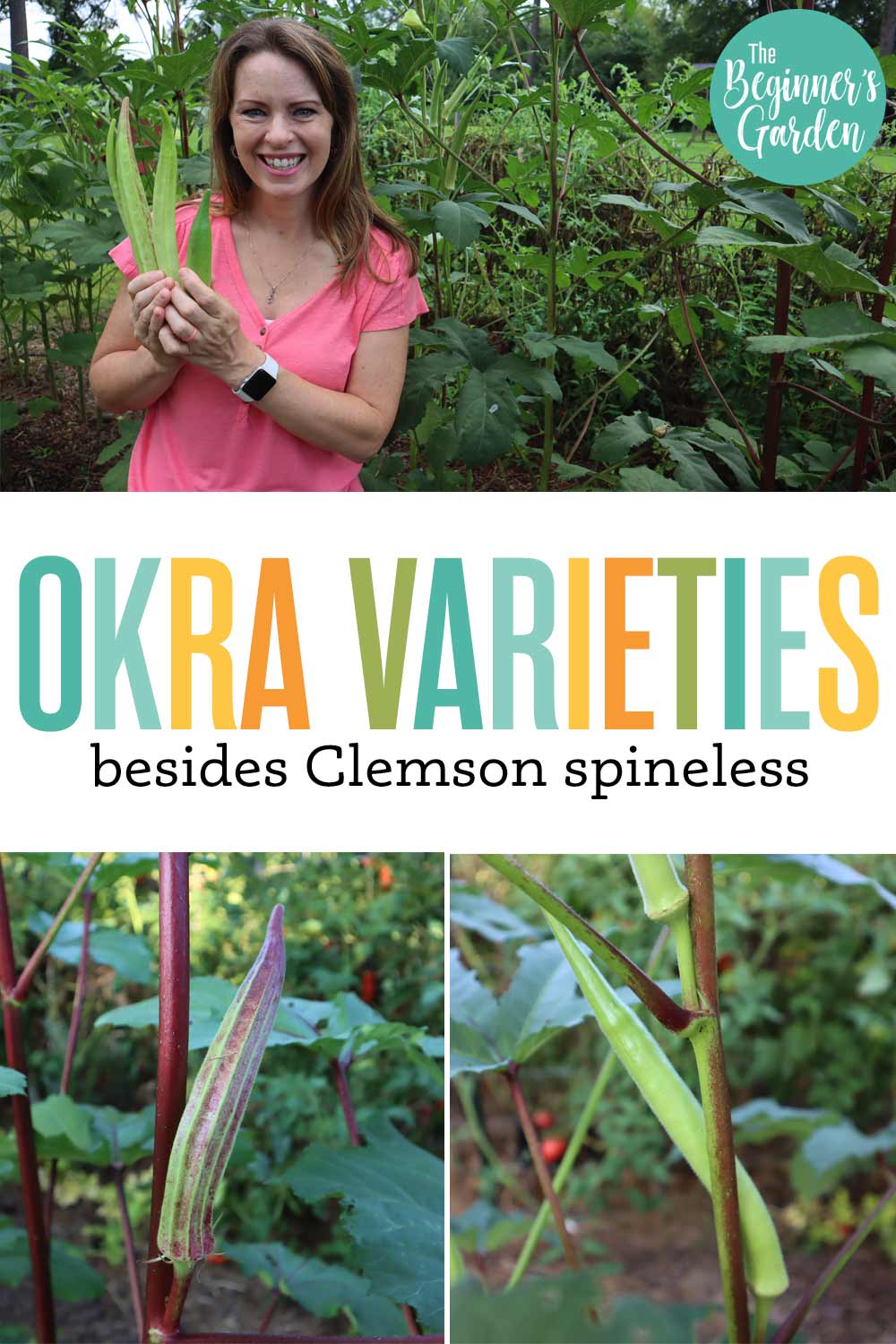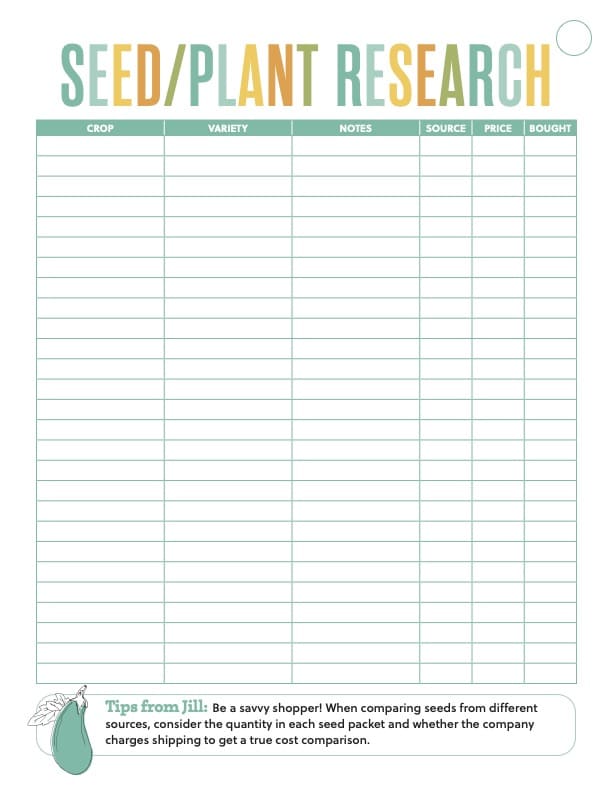New Okra Varieties to Try (Beyond Clemson Spineless)
Okra is a staple in many southern gardens. It grows well in long, hot seasons. Many of us in the south grew up eating this summer staple and can’t imagine our gardens without it!
I’ve always grown the Clemson Spineless variety of Okra because that seems to be the main one that people grow. In fact, I’ve been saving seed from my Clemson Spineless variety for over 10 years.
But, if okra is one my favorite summer crops to grow, why limit myself to just one kind? Sure, I’ve tried to grow a few different varieties in my garden over the years, but this year, I decided it was time to branch out and try new types of okra. What I learned might surprise you, as it did me. Perhaps knowing your options for growing okra will inspire you to try a new variety and also help you better understand how you can grow okra successfully.
Different Varieties of Okra
First, I learned that not all okra is created equal. Here are the different varieties of okra I tried to grow and how they compared to my trusted Clemson Spineless okra that I have been growing for years.
Each of these varieties I purchased from Southern Exposure Seed Exchange. When you’re looking for crops that excel in the heat, they’re a great source for seed.
Burmese Okra
According to seed catalog, Burmese Okra boasts 9-12” pods that are almost spineless and are still tender at 10”. Less gooey than other varieties of okra, the plants bear fruit when the crop is about 18 inches tall.
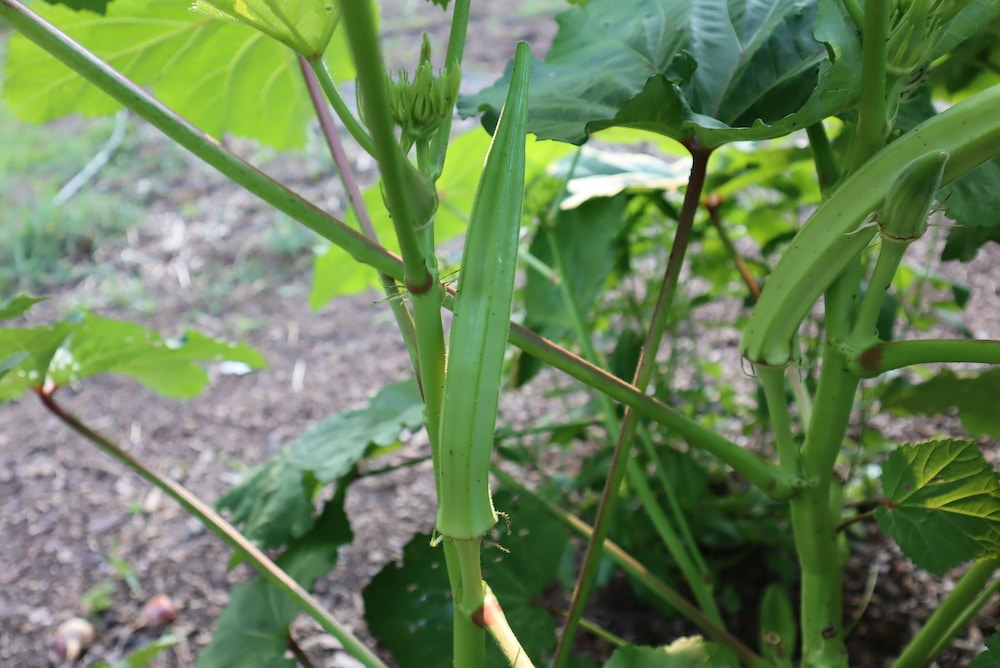
I found all of those selling points to be absolutely true. In fact, this is now my favorite okra! The pods stayed tender while large, and they were crisp and less mucilaginous than other varieties. I also enjoyed growing Burmese because they didn’t get as tall as the other varieties, making it much easier to harvest.
Sherwood Red Okra
Sherwood Red Okra has a great taste to it, especially when fried (every southerner loves fried okra, right?). Still tender even at 9 inches long, it is also known to be less gooey than other varieties of okra that you can grow.
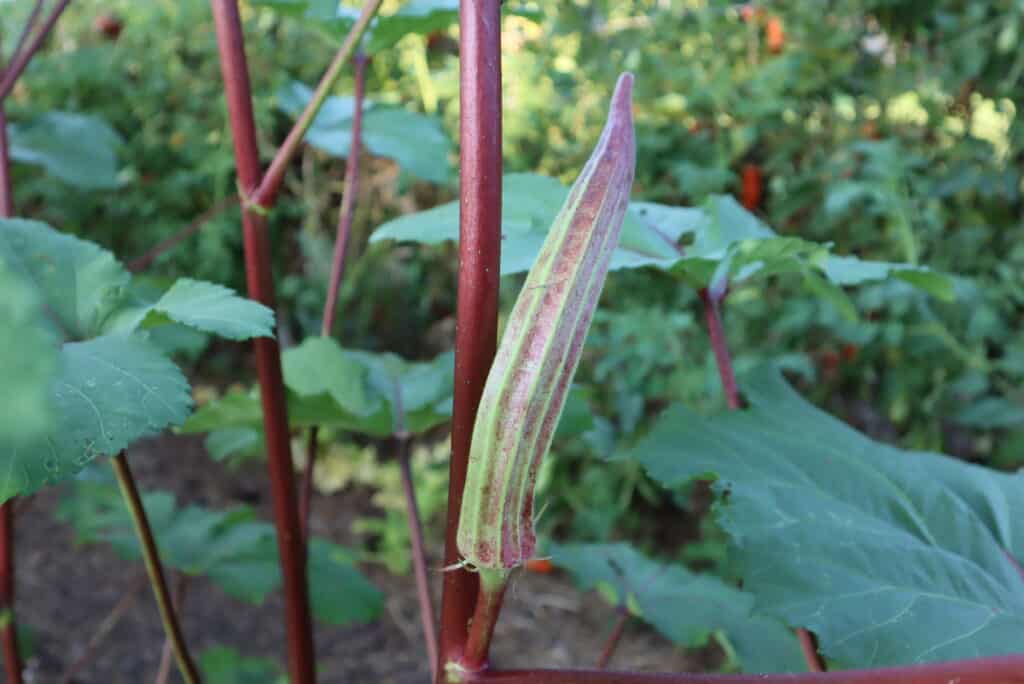
I enjoyed Sherwood Red Okra for all of those reasons, especially early in the season. Later in the season, however, they grew to be so tall that it was difficult to harvest. I had to reach and pull them over, which caused them to bend awkwardly. But overall, they were still a solid option for an okra that didn’t get tough too fast.
Puerto Rico Everblush Okra
Puerto Rico Everblush Okra is a unique plant because it grows early and is quite a productive plant. It’s also very tasty and is still tender at 6 inches tall. This lush plant has a rich history and 50% of all Puerto Rico Everblsh Okra sales go towards the Utopian Seed Project.
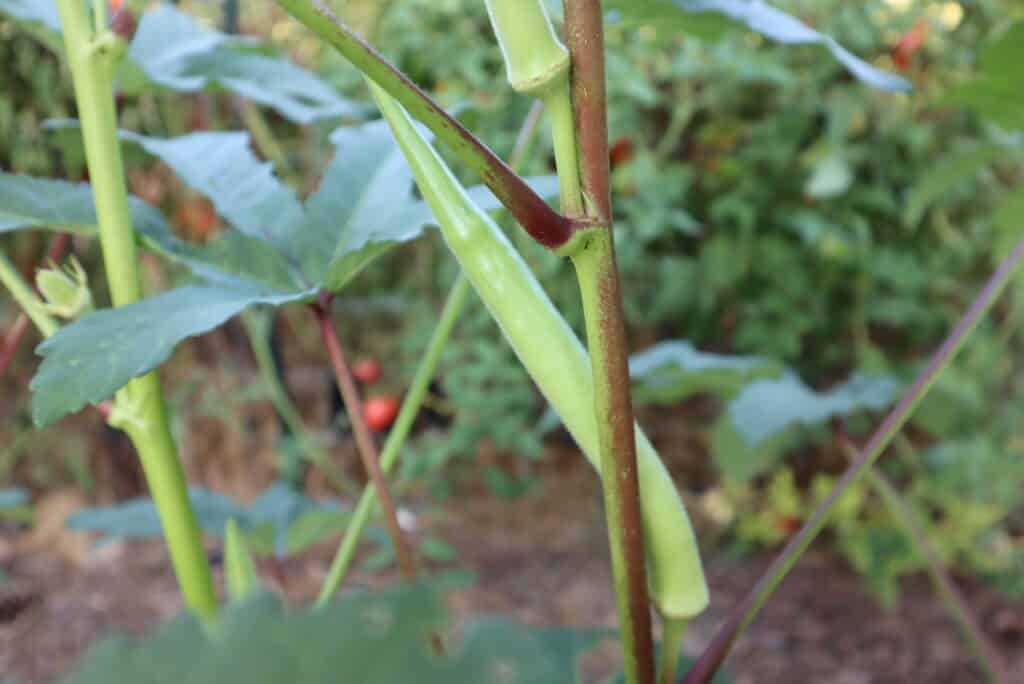
The uniqueness of this variety is that some pods are green and some “blush” to red. I found this variety to be very similar to Sherwood Red in that it stayed tender longer than Clemson Spineless (but not as long as Burmese or Sherwood Red). It also grew to be so tall toward the end of the season that it was difficult to harvest.
Gold Coast Okra
Gold Coast Okra is best known for its well-developed root system and how tolerant it is to both drought and heat.
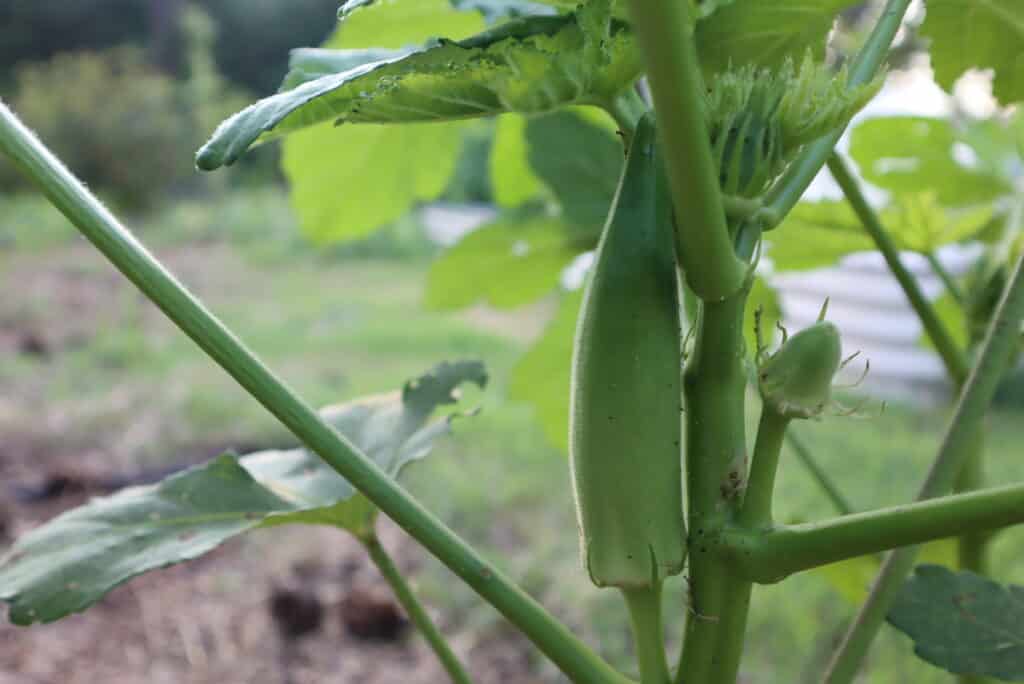
Because of this robust root system, the plant is known to resist root knot nematodes better than other varieties. (I always have issues with root knot nematodes on my okra.)I found all of these claims absolutely true. This plant was vibrant, vigorous, and productive, and it didn’t seem to be affected by root knot nematodes as much as the others.
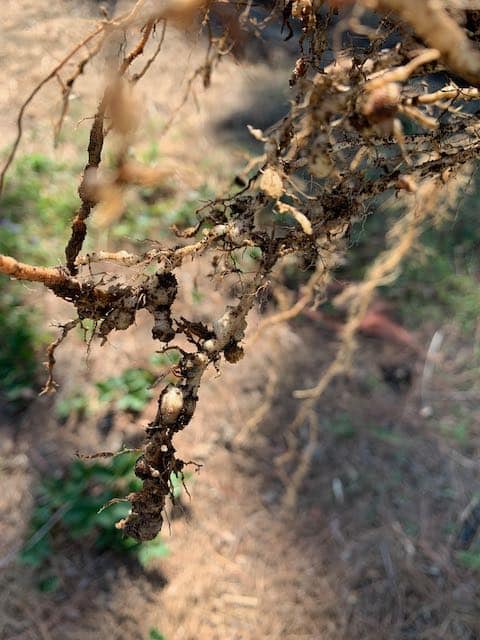
It also stayed fairly compact — only growing about 6-7′ tall — easy enough to harvest.
What I did not like about Gold Coast Okra was how fast the pods turned tough. If not harvested very young, they could not be eaten. I found them to get tougher faster than even Clemson Spineless.
They also were more mucilaginous than all the other varieties. This may or may not be a bad thing, depending on the gardener. If you want this for thick stews or other recipes like this, Gold Coast would be an excellent choice. But if you’re wanting a more crisp, dry okra, the other varieties listed would serve you better.
Clemson Spineless
Since I’m comparing all of these new varieties to Clemson Spineless, I probably should share what makes it unique.
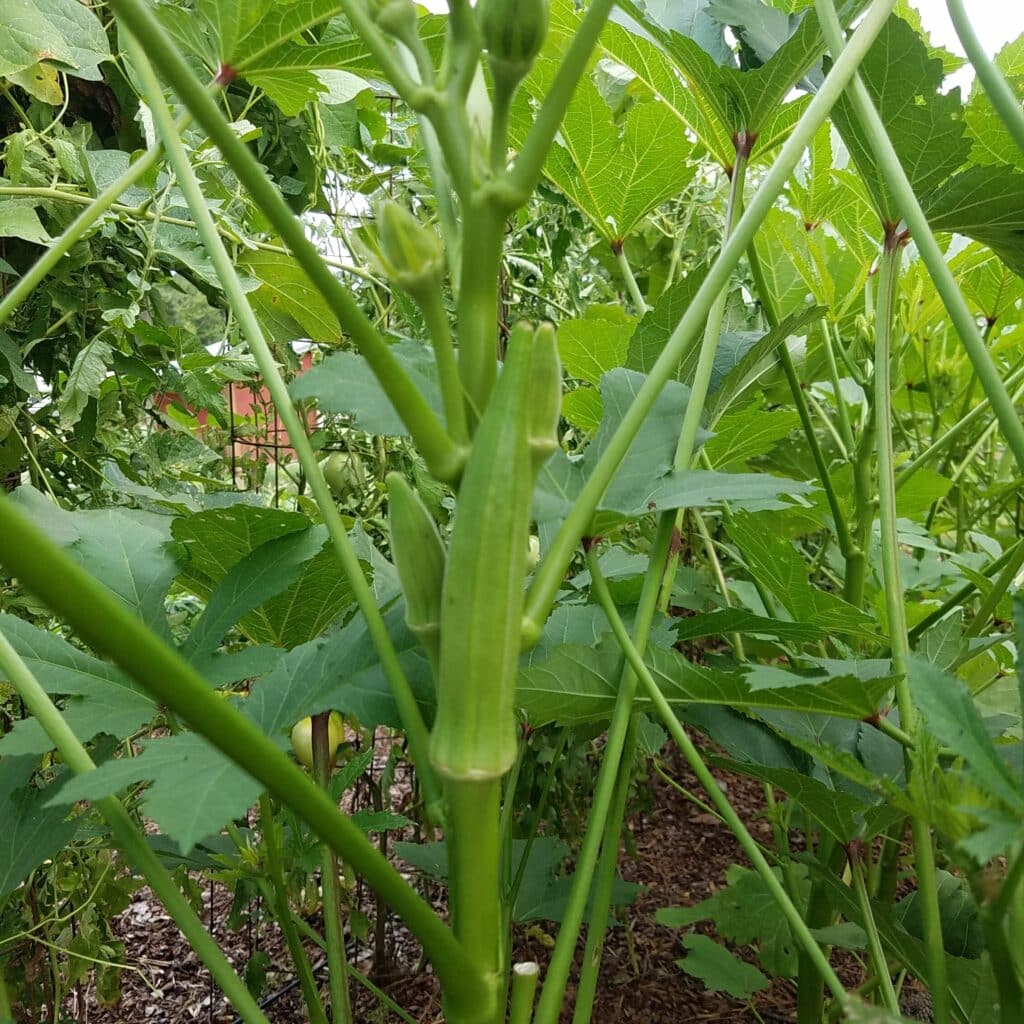
Clemson Spineless is dependable and productive. It grows tall but not as tall as the Sherwood Red an Puerto Rico Everblush. It stays tender to about 4-5″ but after that gets tough in a hurry. It also boasts a decent amount of mucilage, making it ideal for stews but also tender fried squash.
Clemson Spineless has been my “go-to” okra for years, but after this year, I see myself turning more and more to Burmese Okra.
Taste Differences
What about taste? Honestly, I couldn’t tell much of a difference. When I fried the okra, I fried them all together and they tasted the same. I would say the thinner varieties (all but the Gold Coast and Clemson Spineless) roasted better, but this could be because they remained more tender, creating a fantastic tasting roasted okra.
While there are many varieties of okra you can grow, I hope you’ll consider what I’ve learned from the other four okra varieties I tried to grow.
I love spending time pouring through seed catalogs and finding new varieties of crops to grow that will hopefully work well in my garden. If you grow any of these varieties or other interesting ones you grow, comment and share below on what you’ve learned.
Tips for Trying New Varieties
Whether it’s okra or another crop, I use my Seed/Plant Research Sheet in my Complete Garden Planner to take notes as I’m comparing varieties in Seed Catalog.
By writing down the variety, days to maturity, specific traits of varieties, seed source, and cost, I can compare side by side which ones I’m most interested in growing and testing. To take a look at this year’s new Complete Garden Planner and Journal, you can find it in my shop here.
Do you get overwhelmed with garden planning?

Subscribe here for my best tips to plan your garden in just 7 days -- all for FREE.
Plus, I'll send you my "In the Garden E-mail" on Fridays, periodic updates on garden resources relevant to you, and you'll receive access to my entire bank of free garden downloads!
You are also agreeing to our privacy policy.

